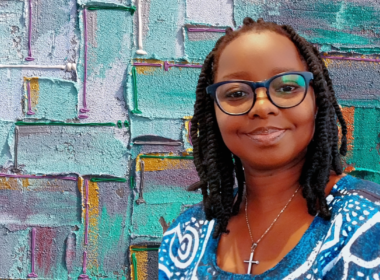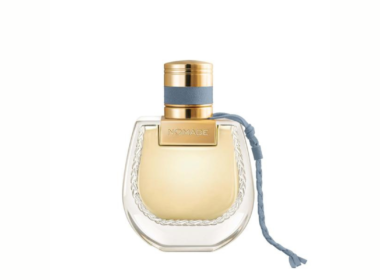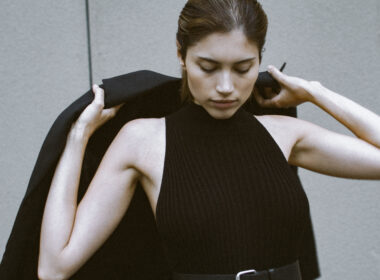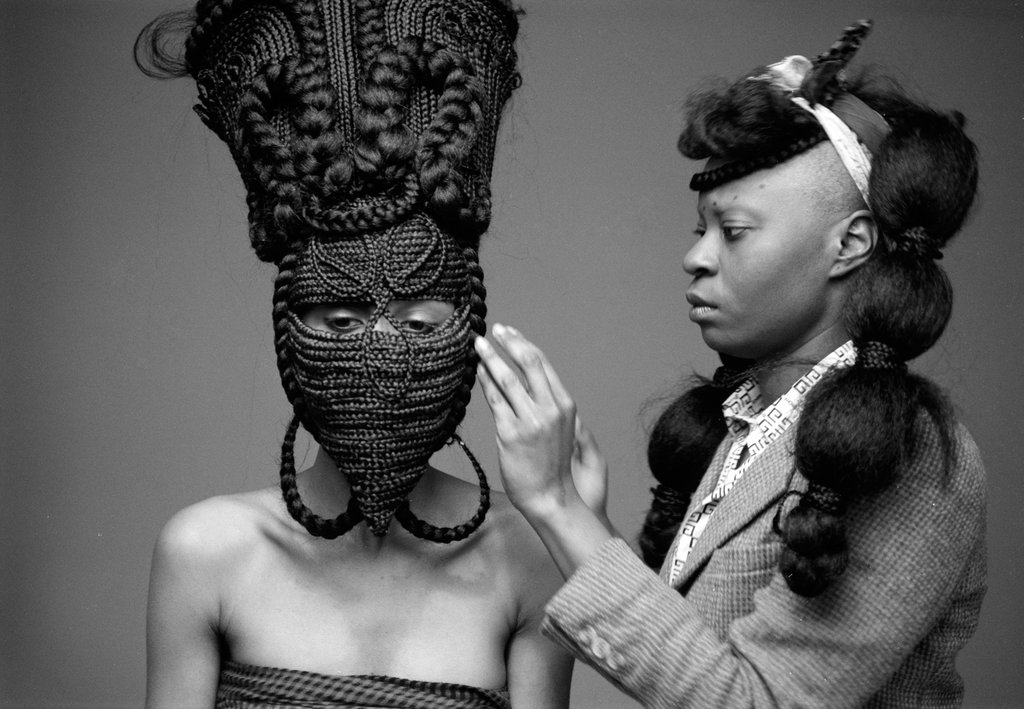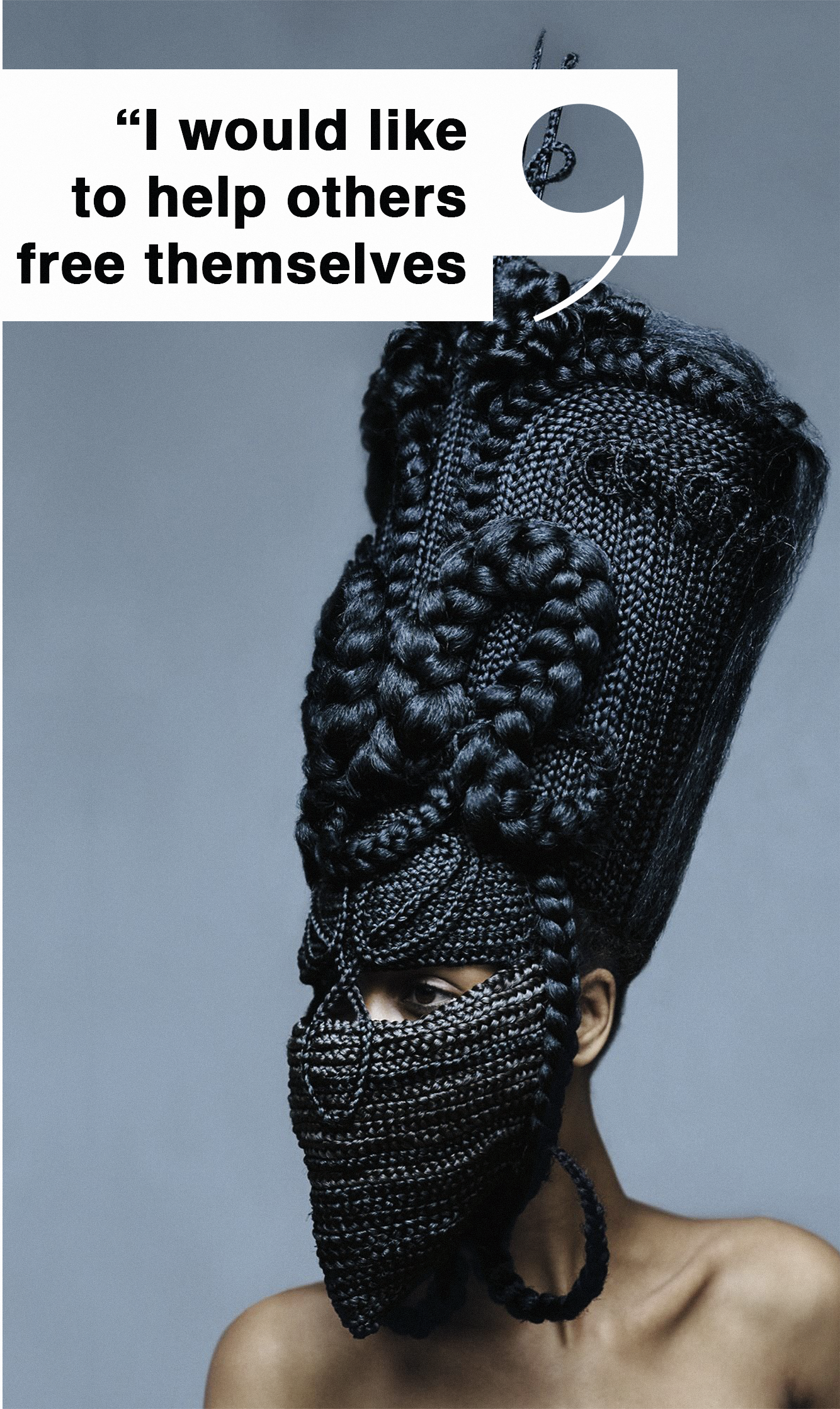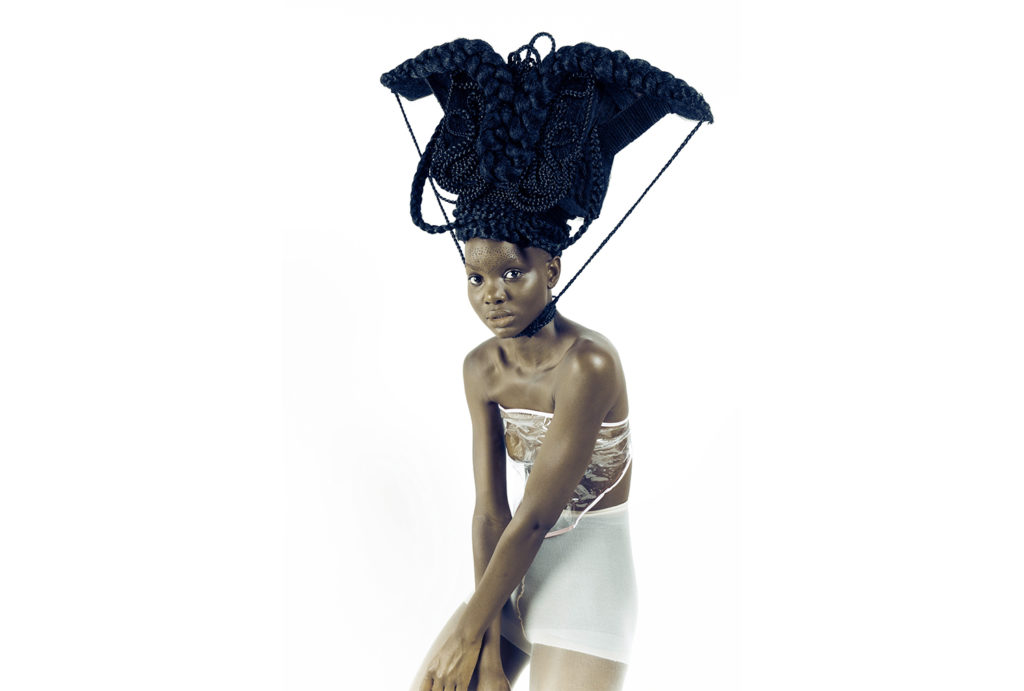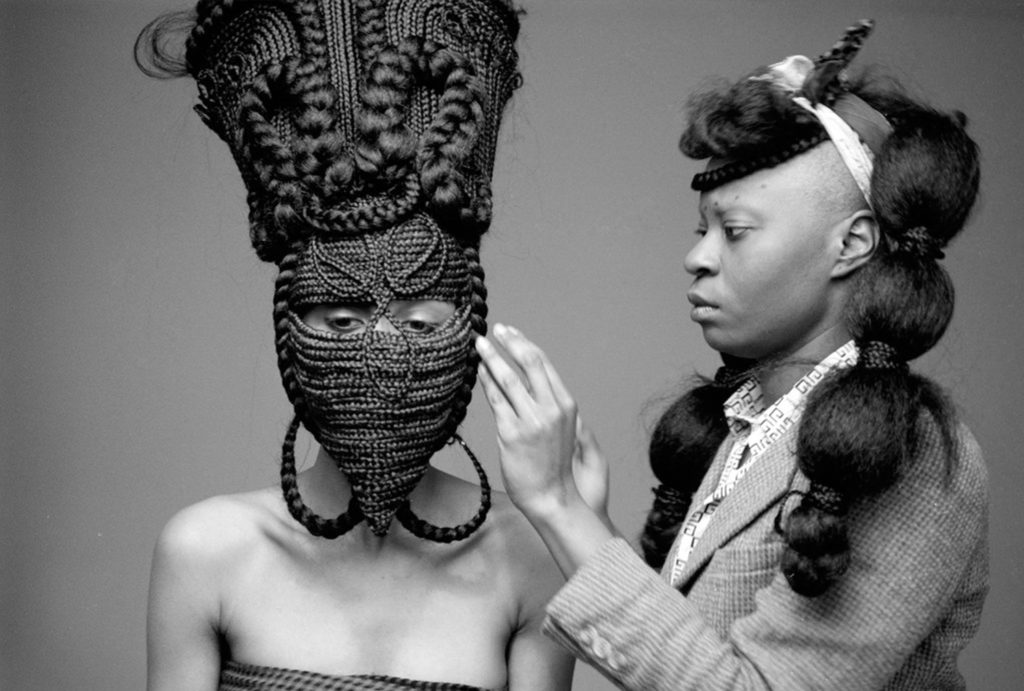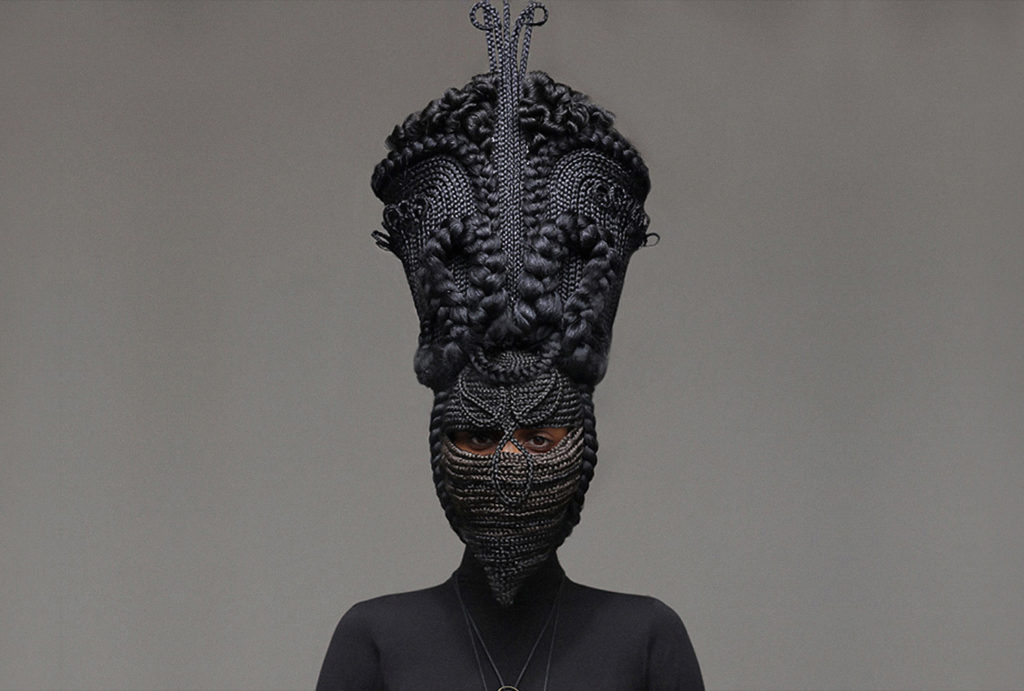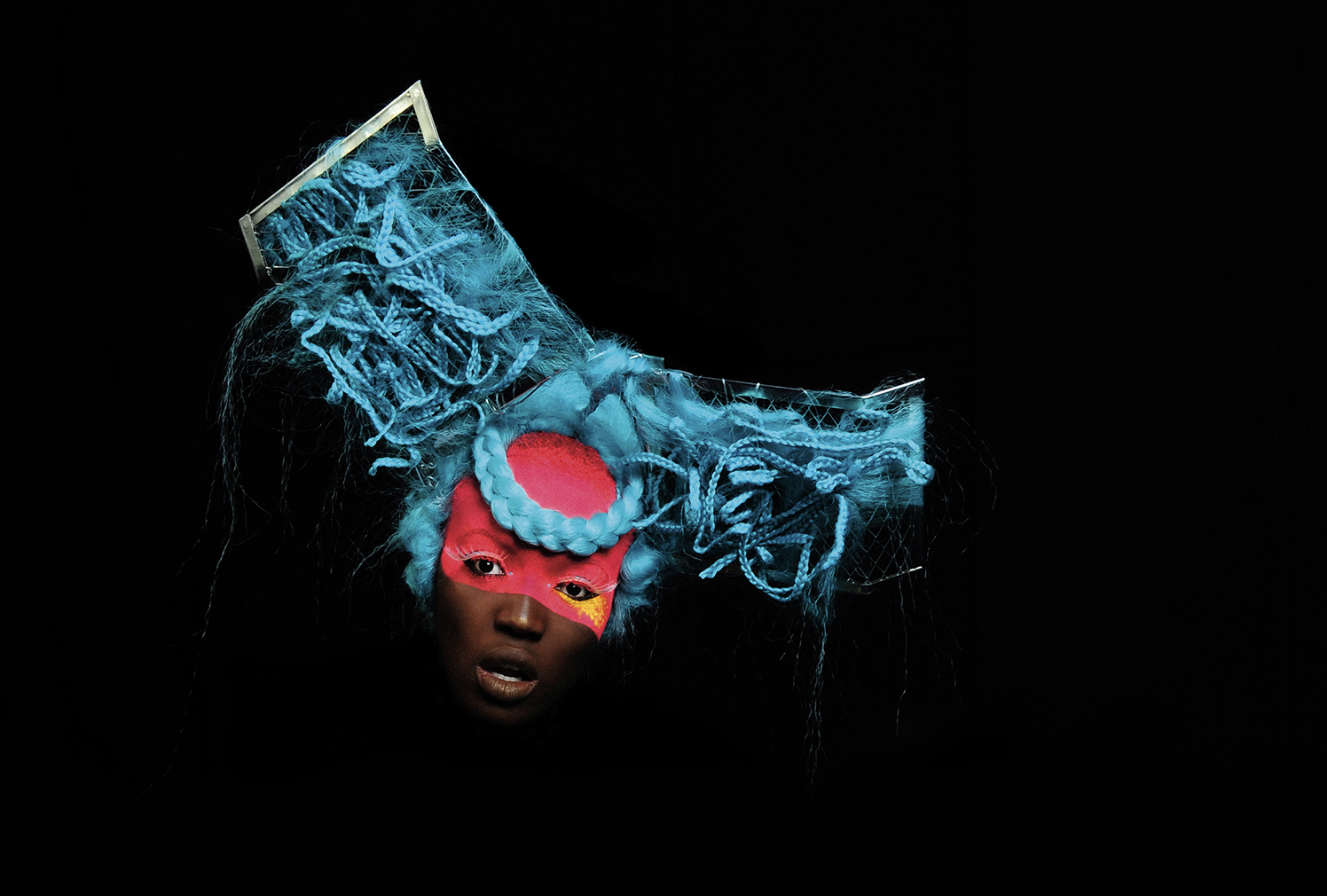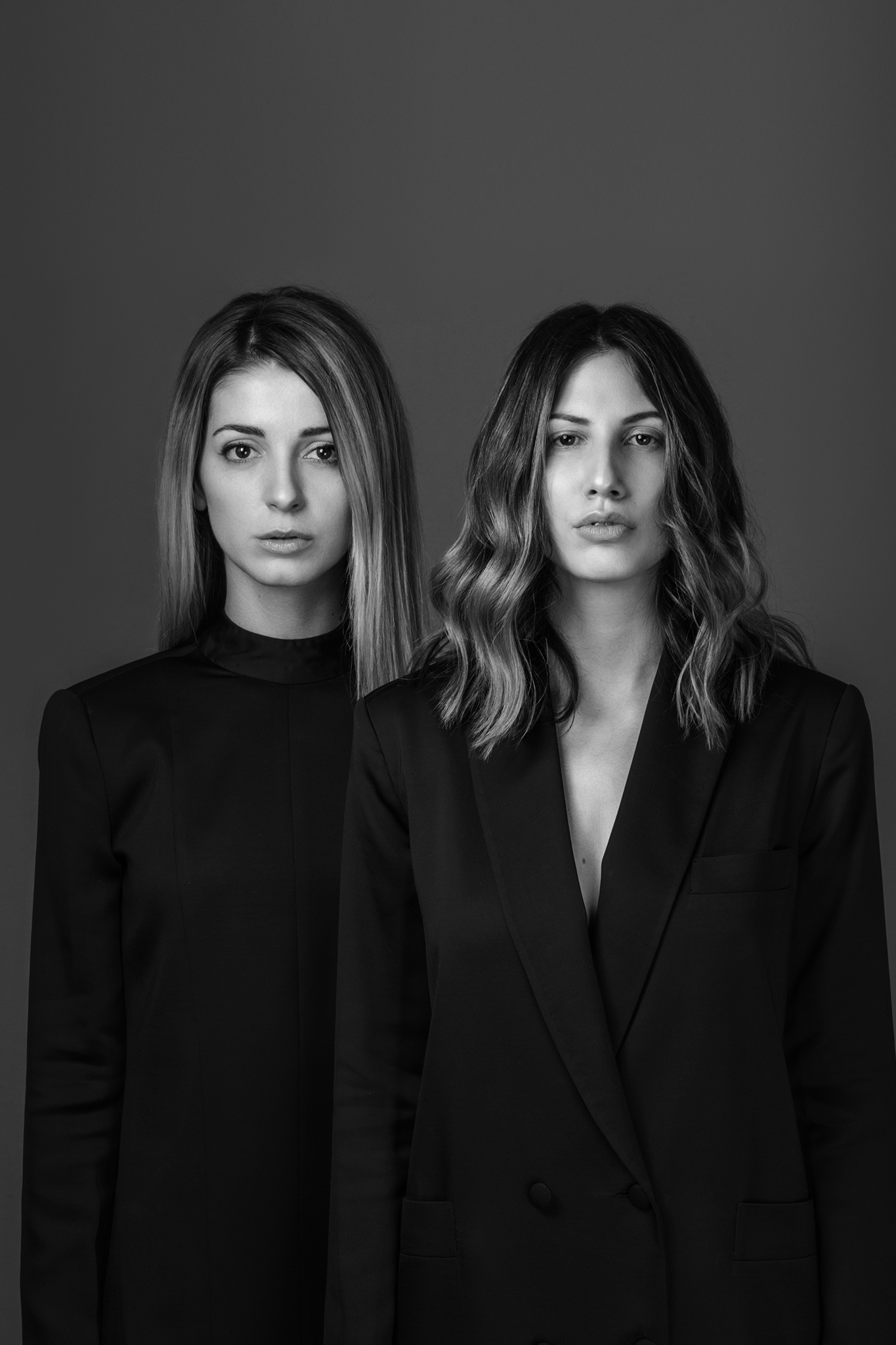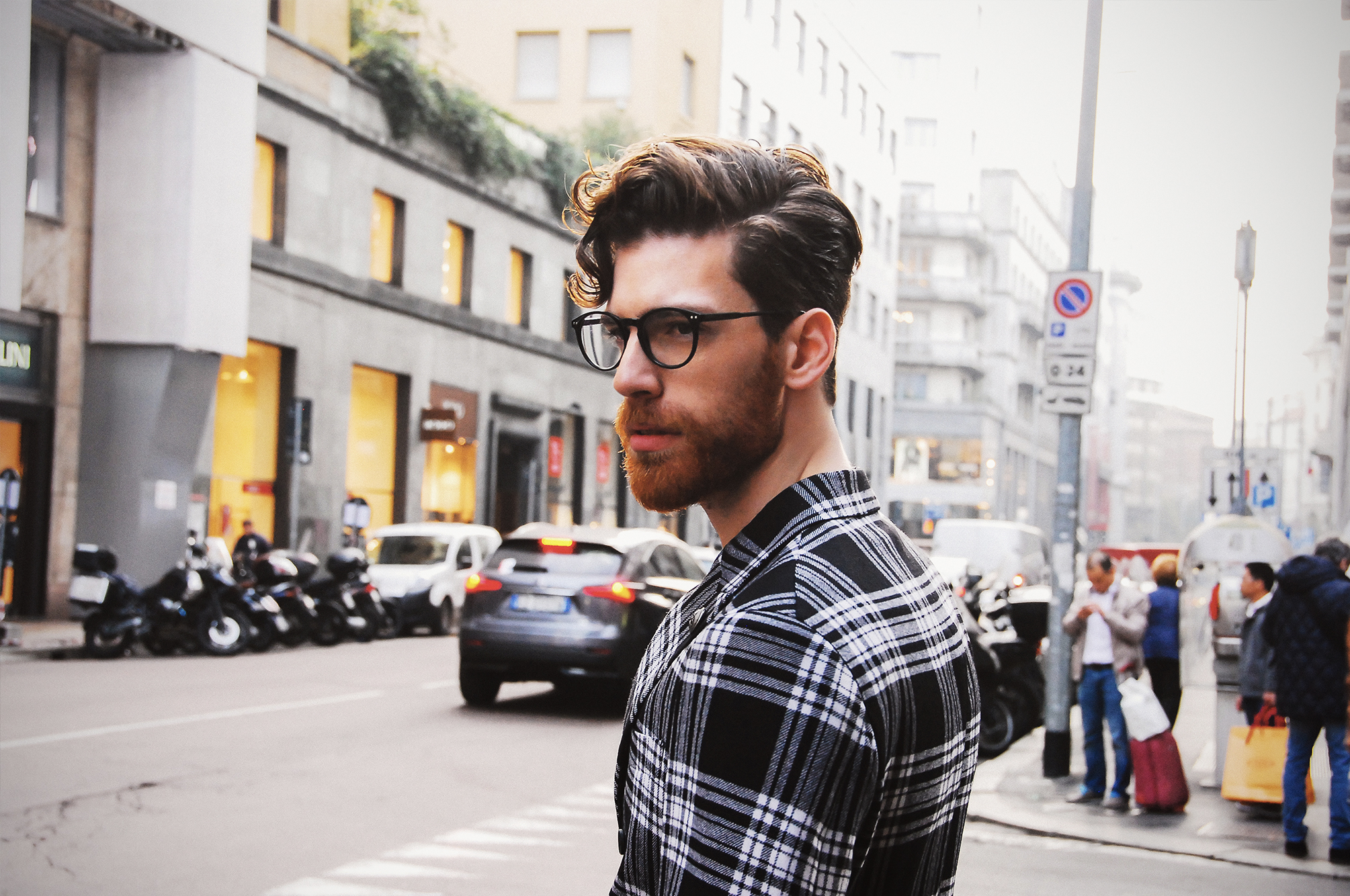Combining elements of sculpture and fashion design and taking it to another level of art, New York-based artist Joanne Petit-Frere developed her “Tresse-Agoche” hair sculpture series with a futuristic vision of womanhood in mind. Woven and mask-like, the artworks echo the religious rituals and folk art forms of many different cultures, endowing the wearers of these hair sculptures with an air of regal power. Captivating and in the same challenging traditional conceptions of beauty in relation to the female figure.This great artist is giving a new meaning to the jewellery sculpting and visual art with experimental approach giving a freedom of expression totally new meaning.
How did you get started in jewellery sculpting?
I had co-founded a collective called Comotroovaysa with some friends years ago. Nia K. Evans, Eric N. Mack & Tomashi Jackson. We were a collective producing experimental jewellery that I designed. Comotroovaysa = How did you find that? A rare experience of desire. An accumulation of materials that dictates its own value. These rarified jewellery art pieces are made of everyday industrial produced items repurposed. One’s understanding of the materials’ prior state only adds to the mystique of these objects, begging the question: Where did you find that? To codify such a question relates to a kind of energy embedded in the works. Freedom to use/ make without remorse. And yet the pieces speak for themselves.
I got started experimenting with Jewelry sculpting while sitting in conversation with Nia K. Evans. I remember I had created a palm ring that consisted of 4 small miniature Pandas! From there, we knew we were on to something. Eric & Tomashi were attending the Cooper Union for the Advancement of Science and Art while I was attending the Fashion Institute of Technology and Nia, Columbia University. We all exercised our specialities to work on this Jewelry Sculpture project.
How have your Haitian roots influenced your work?
My series, Redressing the Crown – is a statement to the colonization of the French on my Haitian people. A statement to the need of Redressing certain thoughts from both sides – the Haitians & the French. As many ideas are still warped. Redressing the Crown is a call to the fact that I as an artist, utilizing hair & tools of identity to flip these notions of the inferiority of Haitians to the French or West African culture. That Haiti is a union of the two. A beautiful braiding of both cultures.
Has Haitian culture had bearing on your personal style and in what way?
Absolutely. I grew up wearing hair ribbons, and ruffle socks even bonnets as a baby. These are still elements I love to implement my personal style. Not exactly ribbons per-say, but the casual dress-up. I remember being the only girl in my Pre-K class wearing hair ribbons. I was embarrassed by them at the time for I removed them once I got to school. I didn’t like the idea of my standing out like this. Funny enough, at this same time I remember having drawn my first fashion figure made from a heart. I think I had just seen snippets of Roger the Rabbit on television and was very inspired by Jessica’s dress. I wish I had this drawing to this day. But yes, Haitian culture as well, being of American culture has influenced my personal style very much. Especially, having a French sensibility as well as they have colonized Haiti in the past before we gained Independence in 1804.
I intend to explore this much more in-depth with photographers and I operating, as a muse in their photography. This separate from my hair sculptures as their own entity. However, this is all in development – as well other interests I will incorporate into my style of delivery.
Tell me something about your collaboration with Les Nubians it seemed very exciting…
Both ladies of Les Nubians are lovely. They were one of the first celebrity clients I have worked with. They are my French-African sisters. I need to see them again soon.
What can you tell us about your Tresse Agoche design project?
Tresse Agoche was design project that has helped raise awareness for my work with hair sculptures. It translates into ‘ Braid Left ‘ – although the pronunciation is in French, the spelling is in Haitian Creole to honour my hand and roots of a once French colonized people. My main mission with TA – was to hypersensitize the braid while showing its extensive architectural capabilities and connecting it’s multicultural reference.
One of the things I noticed you go through your work is your challenging the beauty and what is the traditional perception of it. How much do you think is important to question contemporary aspect of the beauty perception?
I think it is a very big question – what is beautiful? Contemporarily, most important as we are in transformations as a society collectively. A lot has been changing. More than any other question, can most everyone answer with the most divergent answers. However, this is still a skewed perception as to what kind of people exist in what is deemed beautiful.This particular sector, I aim to challenge. As I find myself, freeingly operating in different ideas of beauty. I would like to help others free themselves to this kind of constraint. The constraint of their image not be deemed beautiful.
As a visual artist, you mix different media and give hairstyle and fashion totally new dimension where do you get your inspiration from?
Thank you for the compliment. I am very grateful to take part in a time that is very progressive and that allows for different mediums to exist thru the digital space. My practice is a bit of a slowing-down of this progression if you will. At least, the technological one. I like to practice art analogue style. From braiding my crafts to utilizing a 35mm film camera to incorporating classic film ideology to help trigger a memory in my interactions. These all inspire my work with hair in fashion.
Joanne Petit-Frere, tell us a little bit of your process of creation…where does it start and how does it develops….
It changes, depending on the project. When I am working alone, however – I love to burn Sandal Wood incense and to place 2 drops of Rose Absolute essential oil on my wrist before I begin braiding and constructing my hair sculptures. It usually starts with my archive of images, with just me and the hair or drawings I make.
It seems that there is a lot of freedom in expressing art visions yet being an original visual artist as you are is very rare. Joanne, why do you think it is that way?
I believe my experiences have brought me to this path. I do honour the privileges I’ve been able to partake in due to gifts passed down from my parents as well, what my heart consists of. The fighter in me is also very much alive. This combination of collective experiences and honing in on them with love and the fight for progression of beauty.
What are you working on at the moment?
Recently, I had a conversation with Holly Black. She was able to articulate my words best :
” Her latest enterprise, titled“ Jo Goes West“ is a self-described “metaphor in a multitude of ways. It is a movement, an archival approach inspired by my own inquiry; of the historical facts in connection to the art of my practice in utilising hair and braids.She was inspired to embark on this project, which explores the origins of multiple hairstyles, while on a road trip to California.I started to develop ideas, reading a lot about Western philosophy, world literature and learning more about West Caribbean politics. I re-watched Fievel Goes West and read Jack Kerouac’s On the Road – my favourite; Lorraine Hainsberry’s To Be Young Gifted and Black and was stunned by Elizabeth Abott’s first inside account of Haiti.She is hoping that this research will become a publication or develop an even bigger showcase that encompasses her sculptures and archive material. “My goal is to engage with those even outside of hair; shedding light on an artist who is trying to stay woke and chill, while changing the world for the alternative better ”
Interview: Ana Vasiljevic / Photography: Delphine Diallo, Nigel Hosang, J.Quazi King
